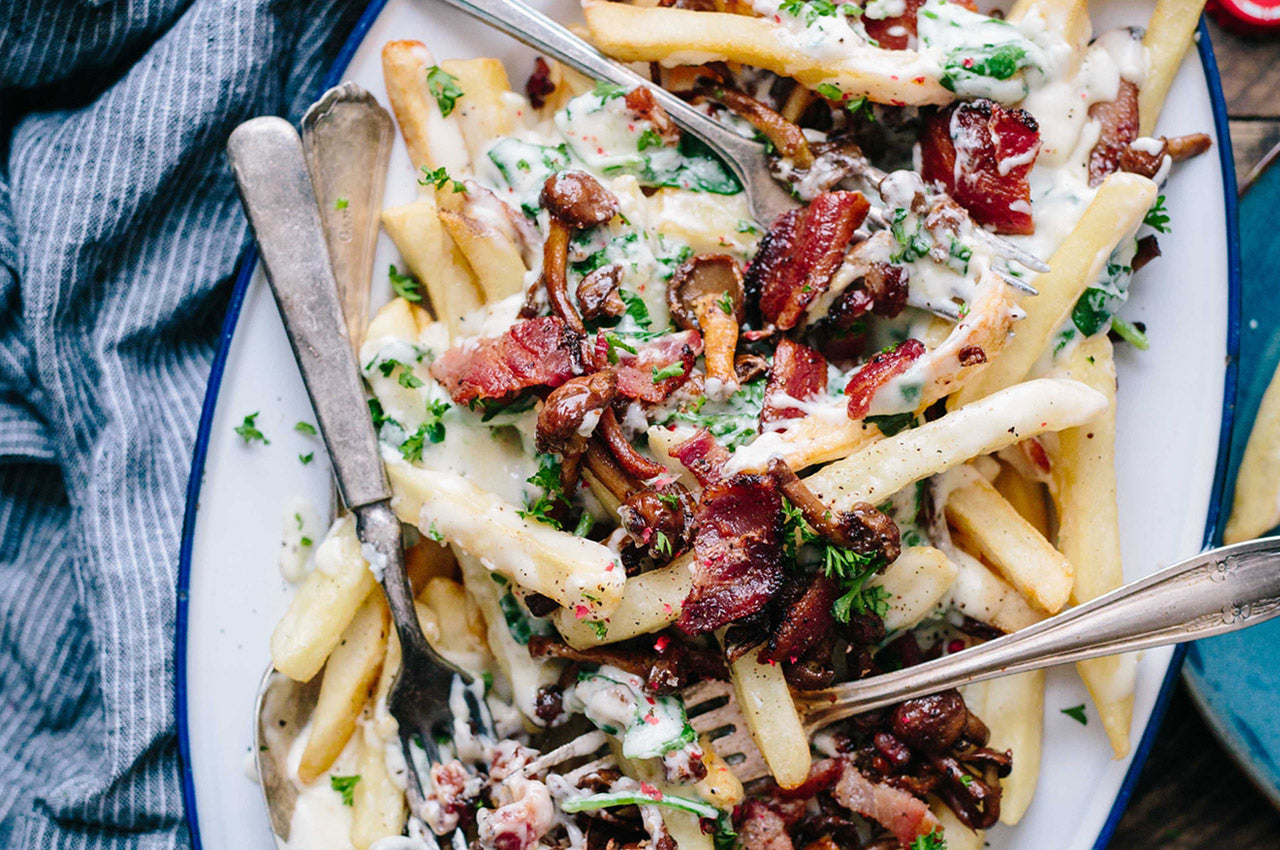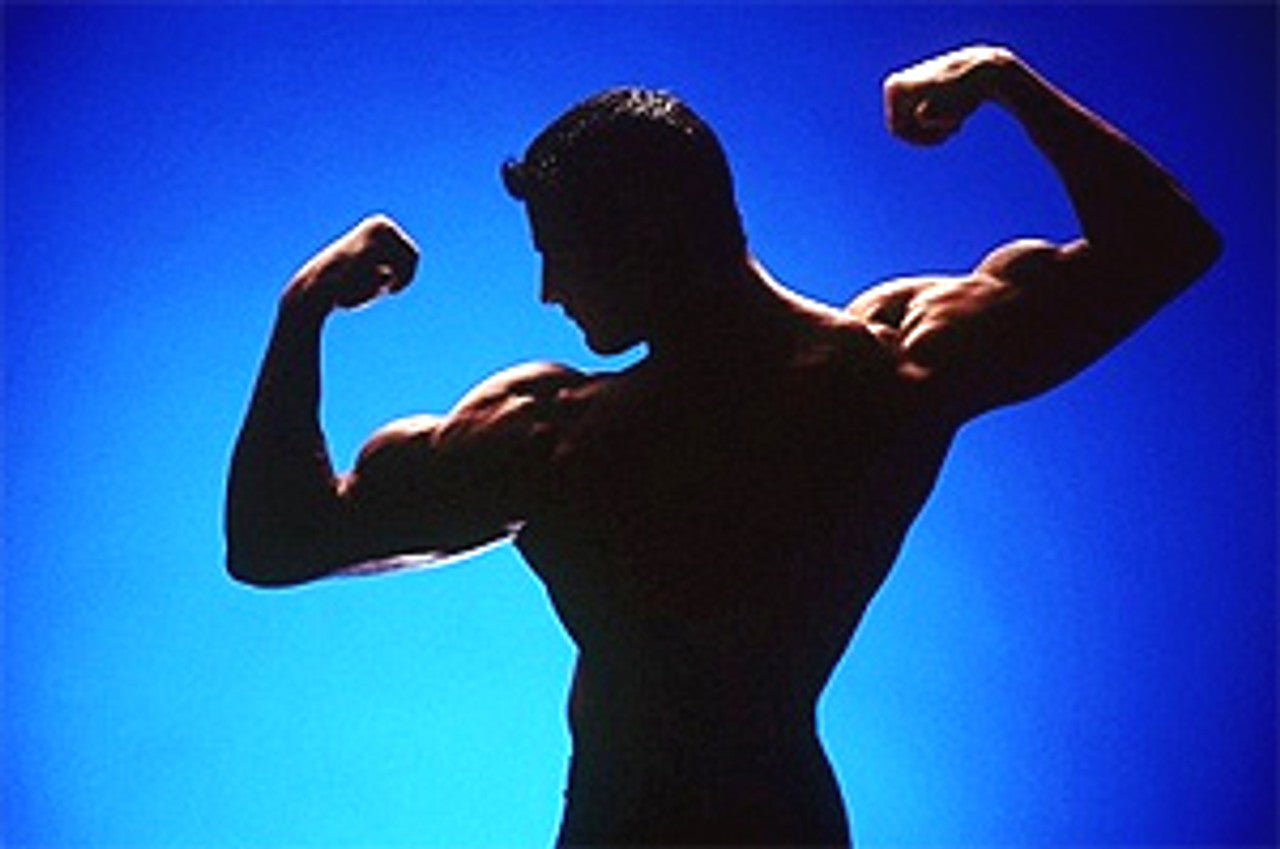
The simple fact is that most men are concerned about their looks, for the bodybuilder and fitness enthusiast, appearance is a strong factor in one's satisfaction. It is undeniable that testosterone (T) directly impacts the physical health, function and appearance of a man, as well as one's mental health and cognitive abilities. In the chronology of life, testosterone's effects produce milestones that easily identify the stages of life: the ultrasound's shadow of a penis during pregnancy, a wispy mustache during adolescence, a deep voice during adulthood, and with its decline late in life, the loss of muscle, and erectile dysfunction.
Many men also see hair changes related to testosterone. Regional hair overgrowth can result in scary Andy Rooney-esque eyebrows, or furry ears. However, the greatest concern is hair loss. There are numerous causes for hair loss, but this article deals primarily with testosterone-related hair loss, called androgenetic alopecia (AA).1 AA commonly results in loss of hair in an ever-growing patch, typically from the crown of the head. About half of all men (and a fair number of women) will develop "male pattern balding." For some, this may start in their early 20s, while others will be spared any noticeable hair loss until their mid-50s.
Bodybuilders and other athletes who have used anabolic-androgenic steroids (AAS) and are predisposed to hair loss often see an acceleration during AAS cycles. Testosterone is an androgen, but in the body it can be converted into a more androgenic form called DHT via an enzyme called 5-alpha reductase (5AR); conversely, it can be metabolized into an estrogen via a separate enzyme group called aromatase. During natural testosterone production, an epimer called epitestosterone is produced in near-equivalent amounts. Epitestosterone has anti-androgenic properties, so it probably balances out the effects of testosterone. AAS users suppress natural testosterone production (and thus epitestosterone production), so they lose that protective "check and balance." The AAS that cause the most pronounced hair loss are those based upon the DHT structure or those that do not aromatize easily Winstrol and Anadrol 50 are notorious for this effect.
So, it is an inevitable fact of life that half of all men (and possibly a higher percentage of AAS users) will suffer the indignity of the comb-over? Thankfully, not, there is research old and new that offers hope. In the last few decades, relatively effective and scientifically based treatments became available. Of course, there is always the Hair Club for Men, but there is something "right" about regrowing one's own hair. It is a sign of youth and health to the masses.
SOME HAIR-RAISING OPTIONS
The first hair-loss drug to be approved was minoxidil (Rogaine). This drug was originally developed to treat high blood pressure, but the "side effect" was discovered incidentally when patients commonly reported hair regrowth. Despite the early promise, minoxidil's results have not lived up to the "miracle drug" status. It does work in providing hair regrowth to lesser or greater effect in about two out of three men who are in the early stages of hair loss, women suffering from androgenetic alopecia experience better and more consistent results. Of course, women are less affected due to higher estrogen and lower DHT concentrations.
Minoxidil works best on the crown of the head, and is not as effective in treating frontal hair loss (i.e., receding hair line). Its effects are not permanent, requiring daily or twice-daily application. Minoxidil is available as an over-the-counter product, so it is readily accessible. The exact mechanism of minoxidil's actions is not well understood, despite the product being marketed for over 20 years. It appears to push hair follicles past the "resting" stage (telogen), back into the growth phase of the hair life cycle (anagen). It is presumed that improved blood flow to the scalp may be one route of effect, increased intracellular calcium is another proposed effect.
Another shampoo available over-the-counter has been shown to be nearly equivalent to minoxidil, however, it has not been submitted to the FDA for approval as a hair-loss treatment. This is likely a financial issue, rather than a clinical issue, as the active ingredient (ketoconazole) has been known to affect hair growth for many years. Therefore, any product would not be eligible for patent protection. However, as consumer magazines have reported this effect repeatedly over the years, it is likely that much of the demand for Nizoral and other ketoconazole-based shampoos is for treating hair loss. Ketoconazole is an anti-fungal drug, and has also been shown to lower testosterone and reduce inflammation. All three of these functions may aid in promoting hair growth.
Let's take a look at how ketoconazole can work. Some people may be experiencing fungal growth on the skin of the scalp, which stimulates an inflammatory response; lowering testosterone may decrease the concentration of DHT as well, reducing the androgen-based damage to the hair follicle; and lastly, non-specific inflammation accelerates hair loss, so the anti-inflammatory effect of the drug would prolong the hair life cycle. Ketoconazole is not universally effective. While it is no better than minoxidil, it may be a consideration as it works via separate pathways. Oral ketoconazole use can potentially lower testosterone (or interfere with post-cycle recovery); some people develop an allergic response to the products (e.g., rash).
Briefly, let's discuss the anti-inflammatory component of hair regrowth mentioned above. Patients treated with potent immunosuppressive drugs after an organ transplant or during kidney failure have noted hair regrowth. Many people lose hair due to an autoimmune attack (alopecia areata), it is like rheumatoid arthritis—the body attacks its own cells because it recognizes a protein on the cells as dangerous or foreign. Cyclosporin A is one of the most potent immunosuppressives given after transplants. It has been shown to improve hair growth through at least four modalities, including: increased melanin (hair color), decreased immune response, increased proliferation (growth) of cells, and increased protein formation. Several reports of improved hair growth with minoxidil combined with cyclosporin A have been published.
Other immunosuppressive drugs also have a positive effect on hair growth, such as glucocorticoids (e.g., prednisone). Notably, non-steroidal anti-inflammatory drugs (NSAIDs; e.g., aspirin, ibuprofen) are associated with hair loss in some people, which is the opposite of what one might expect. Ironically, aspirin can reduce testosterone production, making this finding even more puzzling. However, given the role of prostaglandins in cellular function, and the fact that NSAIDs block prostaglandin formation, it is likely that this class of drug interferes with growth signals well before it reduces any inflammatory damage at the hair follicle.
PROPECIA HAS ITS UPS AND DOWNS
Nearly a decade after minoxidil, approval by the FDA was granted to Merck for treating androgenetic alopecia with finasteride (Propecia). Propecia is the same drug as contained in Merck's Proscar, used to treat benign prostatic hyperplasia (enlarged prostate). Finasteride works by inhibiting the enzyme 5AR— the enzyme that converts testosterone to the more androgenic form, DHT. The related drug, dutasteride, has been shown to be more effective in a phase II clinical trial compared to high dose finasteride (5 mg). However, dutasteride inhibits both forms of 5AR (type I and II) whereas finasteride inhibits only type II 5AR. This makes the drug more potent and effective, but also increases the incidence of adverse side effects.
AR therapy is not as benign as some would wish to imply, the most common complaint for both finasteride and dutasteride is diminished libido (low sex drive). Impotence, depression, gynecomastia and other issues are also associated with the drugs. Again, it appears that approximately 60-80 percent of treated men see improvement in hair growth. With this class of treatment, the risks and costs must be balanced against any benefits prior to initiating treatment.
Bodybuilders and athletes have used 5AR-inhibiting drugs when seeking treatment for or protection against hair loss, or for prostate enlargement. Though the comments are anecdotal, it is not uncommon to hear of complaints of reduced strength or training motivation, particularly with the higher-dose forms (e.g., Proscar). Recent news reports are disclosing a concerning number of men suffering from decreased libido, erectile dysfunction, depression and other disorders during and for months after discontinuing Propecia. Some researchers are now cautioning men against using finasteride for a cosmetic issue (hair loss) due to the severity of these symptoms.
TESTOSTERONE AND HAIR GROWTH
Other than atop the head, testosterone is most commonly thought of as the source of hair growth rather than hair loss (e.g., beard, mustache, eyebrows, ears, armpits, pubic, torso and limbs). What is it about the hair on the head that makes it drop when testosterone is around, rather than grow thick and bushy?
The hair on your head is not the same that you have had since birth, adolescence or even before Barack Obama's presidential term began. Hair goes through a cycle that varies a bit among individuals. The growth phase is called the anagen phase; this is when the hair grows, pushes out old hair follicles and develops it thickness and color. The anagen phase lasts two to three years, and roughly 85-90 percent of the hair on your head is in anagen. There is a three-week "death phase" called catagen, wherein the hair follicle shrinks and the hair becomes finer and less darkly pigmented. Typically, only 1-2 percent of hair is in catagen. Lastly, it takes about three months before the "dead" hair falls out or is pushed out by a new hair growing from under. Approximately 10-15 percent of hair follicles are in this phase, called telogen. After telogen, there can be a dormant period that delays the emergence of the next hair follicle. This may delay the next anagen cycle by a month or so. It may help to think of hair as leaves on a tree. During the spring and summer, there is growth and coverage (anagen), autumn signifies the death of the leaves when they dry up and change color (catagen), followed by the shedding of the leaves (telogen), and a dormant winter period before the next leaves enter the cycle.
The most important phase is anagen. Minoxidil seems to accelerate the emergence of the anagen phase of a new follicle after the telogen of the previous follicle, ketoconazole and immunosuppressants may enhance the early phase of anagen and delay catagen. 5AR-inhibitor (5ARi) drugs work by reducing the effect of testosterone on the hair follicle during anagen. Testosterone— and more so, DHT— stunt the growth of new hairs during anagen, resulting in thinner and weaker hair with each cycle (in men predisposed to androgenetic alopecia). As DHT is a stronger androgen signaler, the 5ARi goal of reducing DHT levels is a bit of a compromise. Balding men have a greater androgen receptor density in follicular cells than non-balding men.20
STEROIDS, IGF-1 AND THE FOLLICLE STORM
The original observation that eunuchs never go bald is attributed to Hippocrates, the Father of Modern Medicine. However, the line of men willing to undergo castration is quite short. So, aside from a scrotal sacrifice, drugs that can cause sexual dysfunction and depression, or shampoos that just stop the process at best— what can a man do to stay ahead of the falling follicle storm?
Anabolic-androgenic steroid users need to be aware of the types of AAS being used. Again, there are certain ones more prone to accelerating hair loss in the predisposed (e.g., Winstrol, Halotestin, Anadrol 50, testosterone esters). Though there is no valid scientific research in the field, anecdotal reports suggest that nandrolone esters (e.g., Deca-durabolin) do not accelerate hair loss due to the fact that nandrolone and DHN (the 5AR metabolite) are significantly less androgenic than DHT. It should be noted that nandrolone used in exclusion of testosterone derivatives can lead to sexual dysfunction as well. [This is not advice to use nandrolone or other AAS]
One effect of DHT on the scalp, little noted in most research, is a reduction in local IGF-1 production. In skeletal muscle, locally produced IGF-1, along with other growth signals, activates the satellite cells to divide and attach to muscle as a response to the hypertrophic effect of training. A fascinating piece of research studying the scalp of bald versus non-bald men showed that despite having equivalent pools of stem cells, balding men have markedly decreased numbers of progenitor cells. A stem cell is the earliest ancestor to a functioning cell (e.g., muscle, hair, skin, etc.); progenitor cells are the cells that convert into functioning cells. In balding men, the stem cells do not "evolve" into progenitor cells, and the species (hair) dies. The stem cells and progenitor cells are located in a bundle of cells closely associated with the hair follicle in a region known as the "bulge." Yes, young men have bigger bulges than old men.
This is probably the most convincing example of the IGF-1 mechanism improving dermal/epidermal function. A 2008 study published in a highly regarded, peer-reviewed journal defined the process and results of a topical application of a RK compound, importantly, this included mouse and human trials. Previously, it was shown that capsaicin stimulates sensory nerves that then release a protein hormone (CGRP) resulting in IGF-1 production. As RK has a similar structure and is approximately four times as potent compared to capsaicin, it was logical to assess its function. In the mice, it was proven that RK increases CGRP, IGF-1 and hair growth. In humans, 50 percent of subjects promoted hair growth at five months. Topical application on the faces of five female subjects resulted in improved elasticity within two weeks.
CAN BALDING MEN STAY AHEAD?
Hair loss happens to a lot of men eventually. Exactly why is not fully understood, and thus there is yet to be a satisfying treatment available. It is known that in men predisposed to the condition, the use of many AAS can accelerate the process. While castration may be an effective deterrent, it is not a practical consideration. The existing treatments are able to slow the process in approximately 60-70 percent of balding men, but true regrowth remains just out of reach. Products combining several of the discussed agents are being reported as being more effective in limited trial. Modest hair regrowth occurs with minoxidil or ketoconazole, 5AR inhibitors have about the same degree of effectiveness and are more convenient. However, the emerging reports of men suffering from severe sexual dysfunction, mood changes and other disorders during and for months after discontinuing finasteride gives cause for concern.
The GH/IGF-1 system, which regulates growth and recovery, appears to be active in the process of hair growth as well. Growth hormone administration by injection is not practical, as it can lead to adverse side effects in other tissue. However, there appears to be compounds in development that may induce local IGF-1 production with resultant hair growth and improved skin elasticity.
Cosmetic issues have long been treated as trivial by medical professionals. However, novel treatments are emerging to treat these conditions that can have a significant negative impact on many men and women. Aside from the drug therapies discussed, other modalities are being reported, including laser light treatments. Be aware, though- there are many scams and overpriced centers willing to prey upon desperate souls.
By Daniel Gwartney, M.D. From Muscular Development
References:
1. Inui S, Itami S. Molecular basis of androgenetic alopecia: From androgen to paracrine mediators through dermal papilla. J Dermatol Sci 2011;61:1-6. 2. Nuck BA, Lucky AW. Epitestosterone: a potential new antiandrogen. J Invest Dermatol 1987;89:209-11. 3. Pavlatos AM, Fultz 0, et al. Review of oxymetholone: a 17alpha-alkylated an-abolic-androgenic steroid. ClinTher. 2001;23:789-801. em4. PriceVH, Menefee E, et al. Changes in hair weight and hair count in men with androgenetic alopecia, after application of 5% and 2% topical minoxidil, placebo, or no treatment. J Am Acad Dermatol 1999;41:717-21.5. Price VH, Menefee E. Quantitative estimation of hair growth. I. androgenetic alopecia in women: effect of minoxidil. J Invest Dermatol 1990;95:683-7 6. Han JH, Kwon OS, et al. Effect of minoxidil on proliferation and apoptosis in dermal papilla cells of human hair follicle. J Dermatol Sci 2004;34:91-8. 7. Messenger AG, Rundegren J. Minoxidil: mechanisms of action on hair growth. Br J Dermatol 2004;150:186-94. 8. Pierard-Franchimont C, De Doncker P, et al. Ketoconazole shampoo: effect of long-term use in androgenic alopecia. Dermatology 1998;196:474-7. 9. Hugo Perez BS. Ketocazole as an adjunct to finasteride in the treatment of androgenetic alopecia in men. Med Hypotheses 2004;62:112-5.10. Tsuji G,Takahara M, et al. Identification of ketoconazole as an AhR-Nrf2 activator in cultured human keratinocytes: the basis of its anti-inflammatory effect. J Invest Dermatol 2012;132:59-68.11. Ishimatsu-TsujiY, SomaT, et al. Identification of novel hair-growth inducers by means of connectivity mapping. FASEB J 2010;24:1489-96. 12. Jung HD, Kim JE, et al. Short anagen syndrome successfully controlled with topical minoxidil and systemic cyclosporine A combination therapy. J Dermatol 2011;38:1108-10.13. Meyer HC. Alopecia associated with ibuprofen. JAMA 1979;242:142. 14. Michelet JF, Commo S, et al. Activation of cytoprotective prostaglandin synthase-1 by minoxidil as a possible explanation for its hair growth-stimulating effect. J Invest Dermatol 1997;108:205-9. 15. Olsen EA, Hordinsky M, et al.The importance of dual 5alpha-reductase inhibition in the treatment of male pattern hair loss: results of a randomized placebo-controlled study of dutasteride versus finasteride. J Am Acad Dermatol 2006;55:1014-23. 16. Traish AM, Hassani J, et al. Adverse side effects of 5-alpha-reductase inhibitors therapy: persistent diminished libido and erectile dysfunction and depression in a subset of patients. J Sex Med 2011;8:872-84. 17. Melia JM, Ferret MC, et al. Efficacy and safety of finasteride therapy for androgenetic alopecia: a systematic review. Arch Dermatol 2010;146:1141-50. 18. Gann C. For Some Men, Propecia's Sexual Side Effects May Be Long-lasting. ABC News July 11, 2012. Available at: http//abcnews.gocom/Health/baldness-drug-propecia-long-lasting-possibly-permanent-sexual/story?id=16758123, accessed July 15, 2012. 19. Halloy J, Bernard BA, et al. Modeling the dynamics of human hair cycles by a follicular automaton. Proc Natl Acad Sci U S A 2000;97:8328-33. 20. Hibberts NA, Howell AE, et al. Balding hair follicle dermal papilla cells contain higher levels of androgen receptors than those from non-balding scalp. J Enclocrinol 1998;156:59-65. 21. T6th M, Zak6rT Different binding of testosterone, 19-nortestosterone and their 5 alpha-reduced derivatives to the androgen receptor of the rat seminal vesicle: a step toward the understanding of the anabolic action of nortesterone. Endokrinologie 1982;80:163-72. 22. Zhao J, Harada N, et al. Dihydrotestosterone inhibits hair growth in mice by inhibiting insulin-like growth factord production in dermal papillae. Growth Horm IGF Res 2011;21:260-7 23. Garza LA,Yang CC, et al. Bald scalp in men with androgenetic alopecia retains hair follicle stem cells but lacks CD200-rich and CD34-positive hair follicle progenitor cells. J Clin Invest 2011;121:613-22, 24. Myung P, Ito M. Dissecting the bulge in hair regeneration. J Clin Invest 2012;122:448-54, 25. Harada N, Okajima K, et al. Effect of topical application of raspberry ketone on dermal production of insulin-like growth factor-I in mice and on hair growth and skin elasticity in humans. Growth Horm IGF Res 2008;18:335-44. 26. Rafi AW, Katz RM. Pilot Study of 15 Patients Receiving a NewTreatment Regimen for Androgenic Alopecia: The Effects of Atopy on AGA. ISBN Dermatol. 2011;2011:241953.27. Rangwala S, Rashid RM. Alopecia: a review of laser and light therapies. Dermatol Online J 2012;18:3.























































